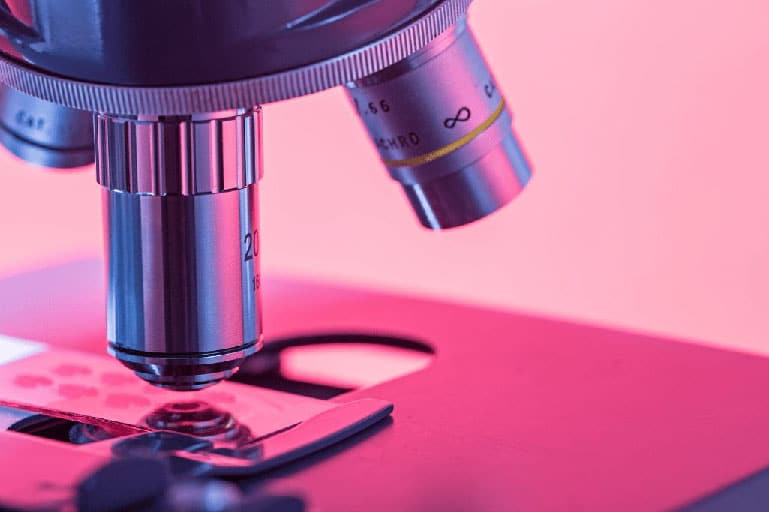
Diagnostic Tests
Blood Tests
Doctors will test a patient’s blood to measure the quantity of the different types of cells (red blood cells, white blood cells, and platelets). This information can help determine how advanced the lymphoma is and whether a patient will be able to tolerate certain kinds of treatments.
These blood tests will most likely include:
- Complete blood count (CBC)
- Differential (to measure the relative amounts of different types of white blood cells)
- Platelets
- Serum lactate dehydrogenase (LDH)
- Comprehensive metabolic panel (to measure the amount of different chemicals in the blood)
Depending on the type of lymphoma, the blood may also be tested for signs of infection with hepatitis B virus (HBV), hepatitis C virus (HCV), or human immunodeficiency virus (HIV). A serum immunoglobulin test (immunoelectrophoresis) may also be performed to test for the presence of certain immunoglobulins (a type of protein) that are sometimes found with certain non-Hodgkin lymphoma (NHL) types.
If the patient is a woman of childbearing age, her doctor will also do a pregnancy test because some of the possible treatments may hurt a fetus.
The results from these tests will help patients and their doctors decide between different types of treatments. Many of these blood tests will be repeated during the course of treatment to check how the treatment is affecting the patient’s body functions.
Other Types of Blood Tests
Choose from the menu or scroll down to read about different blood tests:
Cytogenetic Analysis
Chromosomes are long strands of DNA, the genetic material of a cell. Healthy human cells have 23 pairs of chromosomes. Some lymphomas and other types of cancer have too few or too many chromosomes, or have abnormal chromosome structures. In cytogenetic analysis, chromosomes from a patient’s lymphoma cells are examined under a microscope to check for changes in their number (too few or too many) or the presence of other abnormalities.
Immunophenotyping
Immunophenotyping is a process used during evaluation of biopsy material to distinguish between different types of cells (for example, between normal lymphocytes and lymphoma cells), by detecting specific molecules (cell “markers” or “antigens”) found on the cell surface. These cell markers are detected using special antibodies grown and chemically modified in the laboratory so that they will change color when they stick to their corresponding markers.
This color change is studied under a microscope using immunohistochemistry (IHC) analysis or sorted and counted using a process called flow cytometry. Sometimes, both IHC and flow cytometry are necessary for accurate immunophenotyping.
- Immunohistochemistry (IHC): In this test, thin slices of the biopsy sample (or thin layers of fluid or blood) are placed on slides and treated with sets of antibodies that recognize different markers found in different types of lymphoma cells and normal lymphocytes.
To identify the specific type of lymphoma, the pathologist examines the slides under a microscope to look for the visible color change that happens when the antibody sticks to the marker and counts the number of cells that change color (meaning they are positive for the marker).
- Flow Cytometry: In this test, cells in front of the biopsy sample are placed in a liquid solution and treated with sets of antibodies that recognize different markers found in different types of lymphoma cells.
The results from the flow cytometry analysis will distinguish between different types of lymphoma, other cancers, or some other disease.
Biomarker and Genetic Testing
Doctors may order molecular genetic tests to confirm the cytogenetic tests and find out more detailed information about the types of damage to the genetic information of the lymphoma cells in the patient’s body.
- Fluorescent In Situ Hybridization (FISH): FISH uses fluorescent chemicals to specifically attach to certain parts of chromosomes to show the presence of translocations and other large abnormalities. FISH can be done on blood or bone marrow samples and the test results are usually available within a few days (quicker than cytogenetic testing).
- Immunohistochemistry (IHC): In this test, thin slices of the biopsy sample (or thin layers of fluid or blood) are placed on slides and treated with sets of antibodies that recognize different markers found in different types of lymphoma cells and normal lymphocytes.
- Next Generation Sequencing (NGS): NGS is a high-throughput method used to determine a portion of the nucleotide sequence of an individual’s genome. This technique utilizes DNA sequencing technologies that are capable of processing multiple DNA sequences in parallel. Also called massively parallel sequencing and NGS.
- Polymerase Chain Reaction (PCR): PCR is a test that can detect changes in DNA that are too small to be seen under a microscope, or using cytogenetic analyses or FISH. PCR tests can be done on a very small quantity of lymphoma cells; using this technique, abnormal areas of DNA reproduce in an exponential fashion until they are large enough to be detectable.
Also Learn About:

